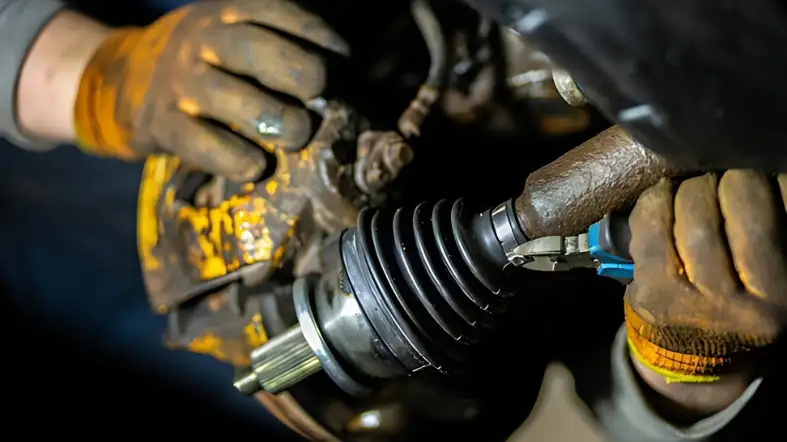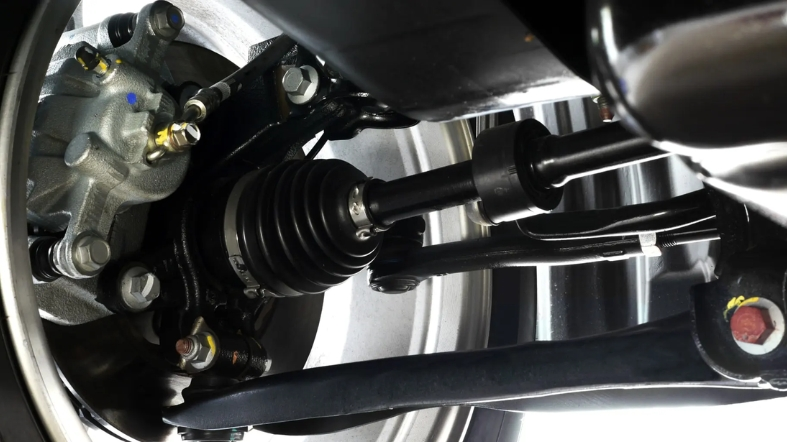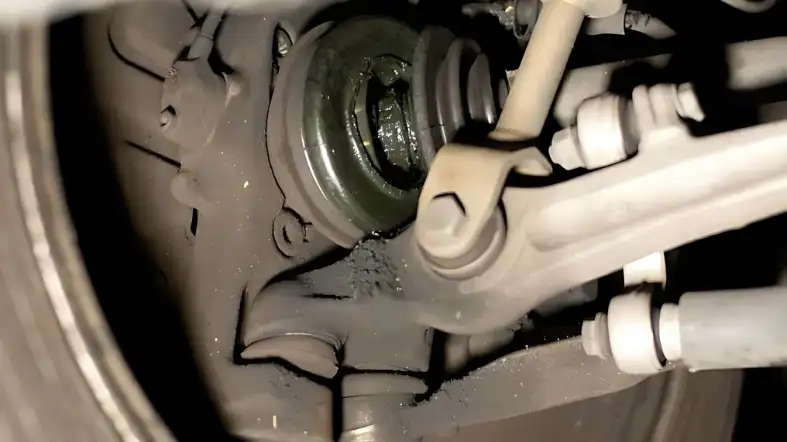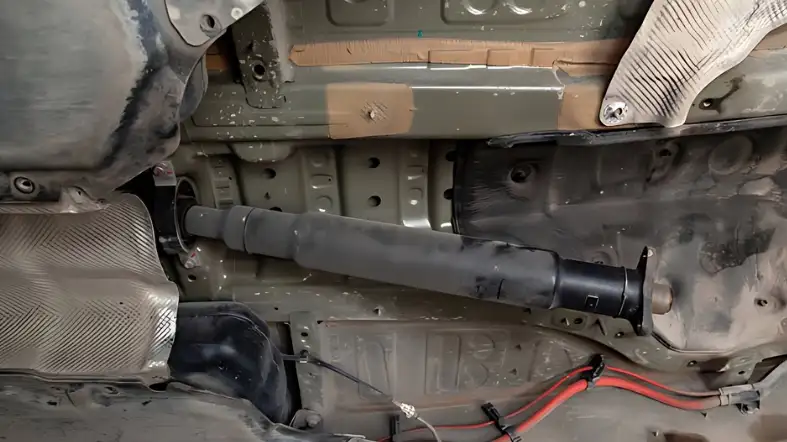If you’re a car enthusiast or a mechanic, you must be familiar with turning a drive shaft by hand.
This is a crucial task that can help you diagnose issues in your car’s drivetrain system.
In this blog post, we’ll first guide you on how to turn drive shafts by hand. Then we will highlight the top mistakes people make when turning a drive shaft by hand.
Keep reading to find out more.
How To Turn Drive Shaft By Hand?
Let’s look at the steps that you can follow to turn a drive shaft by hand: Locate the drive shaft:

Locate the drive shaft:
If you notice, the drive shaft is a long metal rod connecting the transmission to the vehicle’s rear axle or front axle. So first, locate it.
Secure the drive shaft:
Before attempting to turn the drive shaft, make sure it is secured in place.
You can do this by using a pair of locking pliers or a vice grip to hold onto the shaft near the U-joint.
Alternatively, you can have someone hold onto the shaft while you turn it.
Turn the drive shaft:
Turn the drive shaft: Once you have secured the drive shaft, then you can safely turn it by hand.
You can use your other hand to shaft in the opposite direction to the rotation of the wheels.
If the drive shaft is difficult to turn, it could indicate a problem with the drivetrain, such as a seized bearing or damaged U-joint.
Check for resistance:
As you turn the drive shaft, check for any resistance or unusual noises.
If you feel any resistance or hear any grinding or clicking sounds, it could indicate a problem that requires further inspection and repair.
Repeat the process:
You may need to turn the drive shaft several times to fully inspect or diagnose the problem. Make sure to take your time and be careful while turning the drive shaft.
How to Turn a Drive Shaft by Hand on Different Vehicles?

Here are some general steps and tips to turn a drive shaft by hand on different vehicles.
Front-Wheel Drive Vehicles
- To turn a drive shaft by hand on a front-wheel drive vehicle, you can follow these steps:
- Jack up the front of the vehicle and support it securely on jack stands.
- Remove the wheels and brake calipers.
- Remove the hub nut and separate the hub assembly and lower arm.
- Pull the hub away from the drive shaft to free the outermost end.
- Remove the drive shaft end from the gearbox.
- Turn the drive shaft by hand to check for resistance and smoothness of rotation.
- Rear-Wheel Drive Vehicles
- To turn a drive shaft by hand on a rear-wheel drive vehicle, you can follow these steps:
- Jack up the rear of the vehicle and support it securely on jack stands.
- Locate the drive shaft under the vehicle.
- Try to turn the drive shaft by hand. If it does not move, it may be seized and require replacement or repair.
- If the drive shaft turns, check for smoothness and resistance of rotation.
Four-Wheel Drive Vehicles
- To turn a drive shaft by hand on a four-wheel drive vehicle, you can follow these steps:
- Jack up the vehicle and support it securely on jack stands.
- Locate the front and rear drive shafts.
- Try to turn each drive shaft by hand. If one does not move, it may be seized and require replacement or repair.
- If the drive shafts turn, check for smoothness and resistance of rotation.
How to Troubleshoot Issues When Turning a Drive Shaft by Hand?

Here are some troubleshooting steps to help you identify and address the issue:
Check for Obstructions
The first step in troubleshooting a drive shaft that won’t turn by hand is to check for any obstructions.
To do this, carefully inspect the entire length of the driveshaft. Look for any debris, damage, or foreign objects that may be blocking its movement. Even small stones or twigs can cause problems.
If you find any obstructions, remove them and try turning the drive shaft by hand again. Sometimes, a simple clearing of the obstruction is all it takes to resolve the issue.
Inspect Universal Joints
The first step in troubleshooting a drive shaft that won’t turn by hand is to check for any obstructions.
To do this, carefully inspect the entire length of the driveshaft. Look for any debris, damage, or foreign objects that may be blocking its movement. Even small stones or twigs can cause problems.
If you find any obstructions, remove them and try turning the drive shaft by hand again. Sometimes, a simple clearing of the obstruction is all it takes to resolve the issue.
Check for Loose or Worn Components
Check the driveshaft components for any loose or worn parts, such as bushings or couplings.
These parts may become damaged or worn over time, leading to difficulty turning the driveshaft by hand.
If you find any loose or worn components, they may need to be tightened or replaced.
Check for Leaking Grease
If you notice grease leaking from the driveshaft, this may be a sign of a damaged or worn-out seal.
Inspect the seals, which are located at both ends of the driveshaft, and replace them if necessary.
Properly sealed U-joints and components are crucial for the smooth operation of the driveshaft.
Inspect for Damaged or Bent Driveshaft
If you’ve checked all of the above and still cannot turn the driveshaft by hand, it may be bent or damaged.
Carefully inspect the entire length of the driveshaft for any signs of damage or warping, such as dents or cracks. A bent or damaged driveshaft can cause severe vibrations and other issues in your vehicle.
If you find any damage, the driveshaft may need to be replaced to ensure safe and efficient operation.
The Top Mistakes People Make When Turning a Drive Shaft by Hand

Here are some common mistakes people make when turning a drive shaft by hand:
Not wearing proper protective gear
When turning a drive shaft by hand, it’s crucial to wear the right protective gear.
Always put on gloves and eye protection to avoid injuries. The drive shaft might have sharp edges or burrs that can cause cuts or scrapes on your hands.
Also, there’s a risk that the shaft could suddenly rotate or slip, leading to potential impacts on your hands or face.
So, remember to prioritize safety and gear up before attempting this task.
Using too much force
Using excessive force when turning a drive shaft by hand can be hazardous.
If you find it hard to turn the shaft, it might indicate a problem with the shaft or the connected component.
In such cases, it’s best to seek help from a professional. Trying to force it may worsen the issue or even lead to accidents.
Always proceed with caution and avoid overexerting yourself during this process.
Not checking for obstructions
Before attempting to turn a drive shaft by hand, always ensure there are no obstructions in the way.
Double-check for any objects that might interfere with the shaft’s movement.
If the shaft encounters an obstruction and you try to force it, you could end up damaging the shaft or the connected component.
Being thorough in this step can save you from costly mistakes and potential damages.
Turning the wrong way
Every drive shaft has a specific configuration and must be turned in the right direction.
Turning it the wrong way can lead to damage or hinder proper problem diagnosis.
Refer to the vehicle’s manual or consult an expert to determine the correct turning direction.
Following this step ensures you’re on the right track in diagnosing and fixing any issues with the drive shaft.
Not properly securing the vehicle
Ensuring the vehicle is securely held in place is vital when turning the drive shaft by hand.
Unstable positioning can lead to unexpected rotations of the shaft or movements of other components, posing potential dangers.
Always use jack stands or other supports to stabilize the vehicle before proceeding with the task.
Taking this precaution is a critical part of keeping yourself and others safe during the process.
Neglecting to follow proper safety procedures
When working on a vehicle, it’s important to always follow proper safety procedures.
This includes using jack stands or other supports to secure the vehicle, disconnecting the battery, and using caution when working around moving parts.
Failing to follow proper safety procedures can result in serious injury or even death.
Frequently Asked Question
Q. What Tools Do I Need To Turn A Drive Shaft By Hand?
A: You will typically need a socket wrench, a socket that fits the size of the drive shaft nut, and a breaker bar to help apply more leverage.
Q. How Do I Locate The Drive Shaft On My Vehicle?
A: The drive shaft is typically located underneath the vehicle, running from the transmission to the rear differential.
Consult your vehicle’s owner’s manual for specific instructions.
Q. How Do I Know If My Drive Shaft Needs To Be Turned By Hand?
A: If you need to replace the u-joints or other components of the drive shaft, you may need to turn it by hand to access certain areas.
Additionally, if you are checking for play or other issues in the drivetrain, you may need to turn the drive shaft to assess the problem.
Q. How Do I Turn The Drive Shaft By Hand If It Is Stuck Or Difficult To Move?
A: In some cases, the drive shaft may be difficult to turn due to rust or other debris.
Applying penetrating oil and letting it soak for a period of time may help.
You can also use a breaker bar or impact wrench to apply more force.
Q. Do I Need Any Special Training To Turn A Drive Shaft By Hand?
A: No, you do not need any special training to turn a drive shaft by hand.
However, having a basic understanding of vehicle mechanics and taking appropriate safety precautions is important.
If you are unsure or uncomfortable with the process, it may be best to consult a professional mechanic.
Conclusion
Turning a drive shaft by hand can be a useful way to diagnose issues in your car’s drivetrain system.
However, it’s important to avoid the top mistakes people make when turning a drive shaft, including not wearing protective gear, not securing the car, using too much force, and not following the manufacturer’s instructions.
